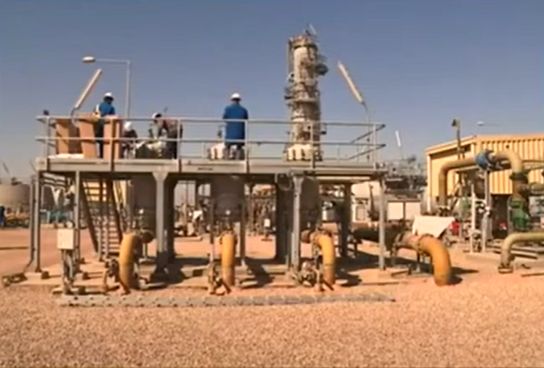


Now well into his second term, President Trump has made energy policy the foundation of his economic agenda—and the results are increasingly visible. While Democrats argue that his tariffs have contributed to higher consumer prices, their focus overlooks a more consequential economic driver: the Trump administration’s unrelenting campaign to expand domestic energy production and infrastructure.
Energy prices in the U.S. are falling so sharply that they are more than offsetting any inflationary pressure tied to trade measures.
The surge in U.S. energy output under Trump is historic. According to the U.S. Energy Information Administration (EIA), domestic oil production is projected to rise by over 400,000 barrels per day from 2024 to the end of 2025. Natural gas production has also climbed to record highs. These gains are the direct result of deliberate executive action and regulatory overhaul.
One of the most consequential moves came on Trump’s first day in office, when he signed several Executive Orders, declaring a National Energy Emergency. By invoking emergency powers under the Energy Policy and Conservation Act, the order allowed federal agencies to bypass key provisions of the National Environmental Policy Act (NEPA). Trump’s move resulted in previously stalled infrastructure projects advancing rapidly, gaining approval within months rather than years.
Trump’s executive actions have sparked immediate legal challenges. Attorneys general in 15 states — including California, New York, and Massachusetts — have filed lawsuits in federal district court, arguing that the emergency declaration infringes on state authority and violates environmental protections. Despite the litigation, the administration remains committed to its energy initiative. Officials insist that expanding energy infrastructure is essential to national security and economic stability.
Recently, the Trump administration secured an agreement with OPEC for a 411,000 barrel-per-day production increase over the May–June period. The deal helped bring crude prices down to $61 per barrel — compared to $81 a year earlier. This kind of international coordination, coupled with a domestic drilling surge, has made the United States one of the few advanced economies experiencing energy deflation.
Trump’s “energy dominance” policy does not stop at oil and gas — it also marks a sharp departure from prior federal investments in large-scale renewable energy infrastructure. In February 2025, the administration revoked federal approval for the Empire Wind Project, a $2.5 billion offshore wind farm planned for the coast of New York. Days later, the Bureau of Land Management announced a nationwide pause on new federal land leases for wind and solar farms, citing low output, high subsidy requirements, and extremely poor return on investment.
Biden-era policies sacrificed reliability for symbolism.
While environmental groups and Democratic governors have condemned the moves as reckless and regressive, Trump’s stance is clear: American energy policy must prioritize dependable performance, cost-efficiency, and infrastructure that can deliver under pressure.
Trump’s American Energy Exceptionalism
Trump’s policy direction is already translating into tangible economic gains. U.S. natural gas prices have stayed below $3 per million BTUs — less than half the global average. That pricing advantage gives American manufacturers a competitive edge, especially in energy-intensive sectors like chemicals, steel, and industrial fabrication.
Capital investment is also rising. In early 2025, ExxonMobil announced a $8 billion expansion of its Gulf Coast operations, citing “regulatory clarity” and “energy security” as primary motivators. Projects of this scale don’t merely boost GDP — they create thousands of high-wage jobs, drive demand in steel, cement, and engineering services, and pour billions into local economies across the South and Midwest.
Affordable energy also keeps inflation down. While Europe faces energy-driven price spikes, U.S. core inflation has remained below 2.5 percent, largely due to stable domestic oil and gas supplies. That price predictability matters: it translates to lower interest rates, more accessible mortgages, and steady consumer confidence.
While Democratic leaders continue to spotlight the cost of imported consumer goods — such as dolls and strollers affected by tariffs — they miss the broader economic shift. Energy prices in the U.S. are falling so sharply that they are more than offsetting any inflationary pressure tied to trade measures. In short, Trump’s energy agenda has insulated the domestic economy from global shocks and positioned the country for sustained growth.
The Left may frame Trump’s policies as outdated or hostile to green energy, but the results speak for themselves: stable prices, surging output, rising manufacturing, and renewed energy independence. What Trump is doing with American energy is not just defensible — it’s economically transformative.
READ MORE from Gregory Lyakhov:
